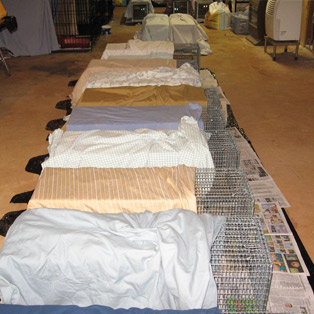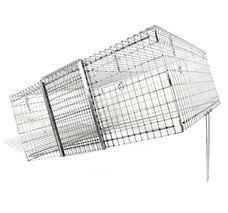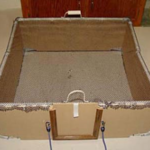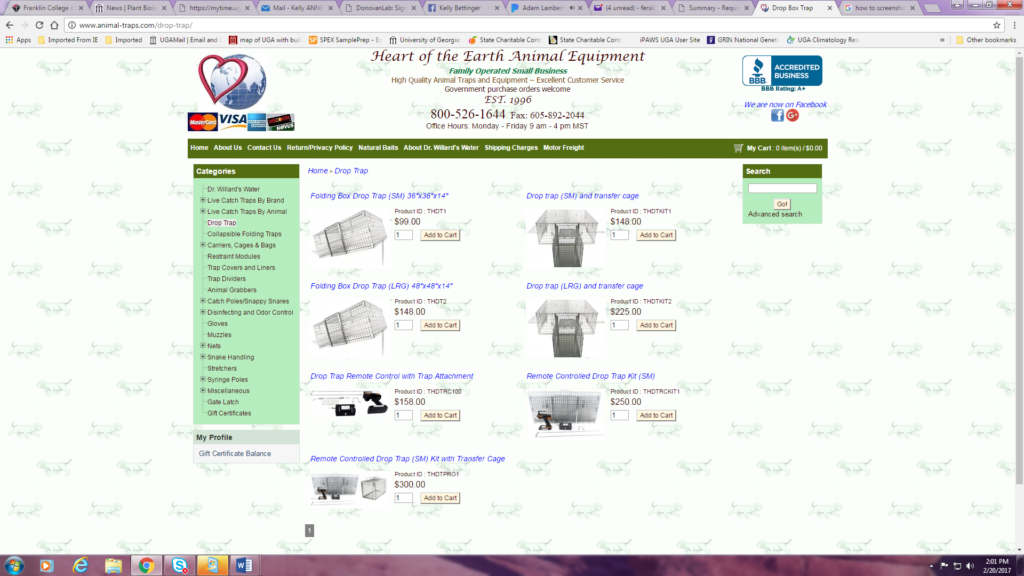TNR Links & Resources
“Responsible feral cat advocates and practitioners of TNR share one goal with wildlife and environmental groups, animal control agencies, and public health officials: to reduce the number of feral cats in the environment in the long term.”
Download our resources PDF here.



Click below to learn more
- Feral Cats and Public Safety – City of Berkeley, CA (feral cats and public health)
- Stanford Cat Network | Links and Resources for Feral Cat Care Programs
- Campus Cat Coalition at The University of Texas at Austin
- Feral Cat Rescue Group – University of North Texas
- Operation Cat Nap – Auburn University’s Trap-Neuter-Return Program
- The Feline Medicine Club, University of California at Davis
- Southern Methodist University’s Feral Cat Program
- Husker Cats – University of Nebraska- Lincoln
- *U.S. Public Opinion on Humane Treatment of Stray Cats (Alley Cat Allies)
- Alley Cat Allies https://www.alleycat.org/community-cat-care/
- Best Friends http://bestfriends.org/resources/feral-cats-and-tnr
- Neighborhood Cats http://www.neighborhoodcats.org/
- Humane Society of the United States http://www.humanesociety.org/issues/feral_cats/
- Cole & Marmalade video on trapping http://youtu.be/8oDuc5s1aLg
- Vox Felina http://voxfelina.com/ Providing critical analysis of claims made in the name of science by those opposed to feral/free-roaming cats and trap-neuter-return (TNR).
- Community Cat Coalition of WA https://www.facebook.com/CommunityCatCoalitionWa/ http://communitycatcoalitionwa.org/ Fantastic Face Book posts with advice and tips on every aspect of backyard feral cat management and TNR. You can read old FB posts on their web site (listed by category) http://communitycatcoalitionwa.org/best-of-facebook/
- Monroe Cat Project https://www.facebook.com/monroeccp
- Lifeline’s Community Cat Program/Catlanta http://lifelineanimal.org/outreach/catlanta https://www.facebook.com/groups/609484405902231/
- Feral Cat Program of Georgia https://www.facebook.com/FCPGA https://www.feralcatprogramofgeorgia.com/
- Altered Feral State https://www.facebook.com/altered.f.state http://www.alteredferalstate.com/
- Campus Cats/Cat Zip Alliance www.catzip.org (FB page is under “Kelly Bettinger”)
- Paws and Whiskers http://www.pawsandwhiskers.us/
- Cat Zip/Campus Cats feralcatcaregivers@yahoo.com
- Athens Area Humane Society (706) 769-9155 1781 Mars Hill Rd, Watkinsville, GA 30677
- Athens Clarke County Animal Control (706) 613-3540 125 Buddy Christian Way Athens, GA 30605
- Oconee County Animal Control (706) 769-3956 1171 Branch Rd, Bishop, GA 30621
- Madison Oglethorpe Animal Shelter (706) 795-2868 1888 Colbert-Danielsville Rd, Danielsville, GA 30633
It is worth it to spend a little more and avoid the cheap traps that can be purchased from local feed & seed stores or home improvement stores. Avoid collapsible traps – a cat that is thrashing around can cause it to collapse! Two-door traps are best – one end should have a sliding door. This allows for easier trap set up, easier care of cats during the time they are being held, and is needed for use with drop traps.
- http://www.trucatchtraps.com
Makers of the “Fat Cat Traps” (in addition to regular traps), and all have a larger trip plate so there isn’t a need to cover the trip plate when setting the trap. Can purchase matching trap dividers and transfer cages. The Fat Cat Trap does not work for small kittens, but their smaller size traps do. - http://www.wildlifecontrolsupplies.com/
Safeguard traps – be sure to get a two-door trap (“slide release back”). Can purchase matching trap dividers and transfer cages. - http://www.havahart.com
Havahart traps – buy the trap designed by Neighborhood Cats that has two doors and an extra large trip plate. 36” is model 608NC, 30” is model 606NC. - http://www.livetrap.com
Tomahawk traps – remote control accessories available.
 A drop trap is a more sophisticated version of the old box propped up on a stick with a string attached. When a cat goes under the “box” to reach the bait, the trapper yanks the string (or pushes a remote control button as the case may be), causing the trap to drop down over the cat. We call it a “trapper’s best friend” because it is great for catching cats who absolutely refuse to enter a normal box trap no matter how hard you try to tempt them.
A drop trap is a more sophisticated version of the old box propped up on a stick with a string attached. When a cat goes under the “box” to reach the bait, the trapper yanks the string (or pushes a remote control button as the case may be), causing the trap to drop down over the cat. We call it a “trapper’s best friend” because it is great for catching cats who absolutely refuse to enter a normal box trap no matter how hard you try to tempt them.
The reason a drop trap works so well has to do with cat psychology. A feral cat is naturally wary of entering the narrow, closed confines of a regular box trap, which is why you have to withhold food the day before a trapping – to get him hungry enough to overcome his fear and go in after the bait. But cats do not fear going under something. Most will go right under a drop trap with little hesitation. Their lack of fear also means they don’t have to be extra-hungry to lure them in. If you just don’t feed that day, you’ll usually be ok.
Drop traps are good for more than trap-shy cats. If you need to pick out one cat from a crowd, you can leave a big bowl of bait, let other cats come and go, and wait until your target arrives before dropping the trap. This kind of selective trapping might be desirable if you’re after young kittens, a pregnant female, an injured cat or the one colony member you missed when you trapped the rest. At Neighborhood Cats, we like to break out the drop trap towards the end of the first day of a mass trapping when there are just a handful of cats left milling about who won’t go in the regular traps. It can save having to come back for the holdouts the next day.
 Neighborhood Cats teamed up with Tomahawk Live Trap to design the first mass-manufactured drop trap, making this kind of trap easily available and affordable. It’s all metal, folds up flat in a suitcase style and has an optional remote control. A sliding door on the side allows for transfer into a box trap with a rear door, transfer cage or feral cat den. Order Model DT1 from Tomahawk Live Trap.
Neighborhood Cats teamed up with Tomahawk Live Trap to design the first mass-manufactured drop trap, making this kind of trap easily available and affordable. It’s all metal, folds up flat in a suitcase style and has an optional remote control. A sliding door on the side allows for transfer into a box trap with a rear door, transfer cage or feral cat den. Order Model DT1 from Tomahawk Live Trap.
For step-by-step instructions on how to set up and use the Neighborhood Cats Drop Trap, read our guide. Many of the instructions apply to make-it-yourself drop traps as well. One word of caution worth emphasizing – don’t use a drop trap for the very first time on that female cat you’ve been after the last five years. Practice once or twice on cats you’ve already fixed, including dropping the trap and transferring out into a box trap. If that’s not possible and you still need a volunteer, try your pet cat in exchange for a treat or two. After you’ve gone through the process and made any learning mistakes, then you’ll be ready for prime time.
 If you’re handy and know basic woodworking skills, you can build your own drop trap. Laura Burns, one of the pioneers of using drop traps for TNR, has provided instructions on how to construct a non-foldable drop trap out of wood and netting, For other designs, including traps made out of PVC pipes, visit the Drop Trap Design Bank where you’ll also find video of a drop trap in action. Making a drop trap that collapses and folds flat is more complicated and requires more construction know-how.
If you’re handy and know basic woodworking skills, you can build your own drop trap. Laura Burns, one of the pioneers of using drop traps for TNR, has provided instructions on how to construct a non-foldable drop trap out of wood and netting, For other designs, including traps made out of PVC pipes, visit the Drop Trap Design Bank where you’ll also find video of a drop trap in action. Making a drop trap that collapses and folds flat is more complicated and requires more construction know-how.
Drop trap design bank: http://droptrapdesign.blogspot.com/
Statewide list – http://www.gapetresources.com/p/spayneuter.html
Be sure to contact each clinic ahead of time to find out what days/times feral cats can be brought in, whether or not an appointment is required for feral cats, cost (always ask if there is a special deal happening!), what type of payment is accepted, etc. All clinics require feral cats be brought in traps – no feral cats in cat carriers!
- Athens Area Humane Society (Oconee County)
1781 Mars Hill Rd
Watkinsville, GA 30677
Phone: (706) 769-9155
www.athenshumanesociety.org - Madison Oglethorpe Animal Shelter (Madison County)
1888 Colbert Danielsville Road
Danielsville, GA 30633
Phone: 706-795-2868
www.moaspets.org - Leftover Pets (Barrow/Gwinnett/Jackson/Hall Counties)
819 Davenport Road
Braselton, GA 30517
Phone: 770-307-3499 or toll free at 1-800-978-5226
www.leftoverpets.org
Services are available at their main clinic in Winder as well as satellite clinics in Dalton and Elberton. - Lifeline Spay Neuter Clinic (DeKalb County, 2 locations)
PO Box 15466
Decatur, GA 30333
Phone: 404-292-8800
www.atlantapets.org
Reduced cost spay/neuter for companion pets and feral cats. Clinics are in Avondale Estates and College Park. Free feral cat spay/neuter surgery in both DeKalb and Fulton Counties! Note: Proof of residency in DeKalb or Fulton is required. - Atlanta Humane Society (Fulton County, 2 locations)
981 Howell Mill Rd, NW, Atlanta, GA 30318
1565 Mansell Rd, Alpharetta, GA 30318
Phone: 404-875-6420
Web: www.atlantahumane.org
Also holds clinics throughout GA via their mobile spay/neuter vehicle. Check website for details. - Planned PEThood (Gwinnett County)
2860 Buford Highway, Bldg. F, Suite 2
Duluth, GA 30096
Phone: 678-561-3491
www.plannedpethoodga.com
Discounted price for feral cats, traps are available for loan with a refundable deposit.
- http://bestfriends.org/resources/colony-management-and-caregiver-resources
- https://www.alleycat.org/community-cat-care-category/cat-care/colony-care/
- http://www.forgottenfelines.com/colony-care.shtml
- http://www.thelastchancesanctuary.com/forms/feralcatcolonyguide.pdf
- http://feralcatfocus.org/colony-management-caring-for-your-colony/
You will often read that if you catch kittens over 8 weeks of age, they cannot be tamed. False! We have found that even “teenagers” – cats 3-8 months old – can easily be tamed. It might take more time, and they may never trust any humans other than those they live with, but these older kittens are often desperate for food and love if they have been separated and are lost from their siblings or mom, making them easier to socialize.
Many communities have rounded up colonies of community cats either for euthanasia or to relocate them to another area. This does not work, because community cats are very connected with their territory: They are familiar with its food sources and places that offer shelter, as well as resident wildlife, other cats in the area, and potential threats to their safety. Even when all community cats are removed, which is difficult to achieve, new cats will soon move in and set up camp.
Relocation is something to consider only if keeping the cats where they are becomes a threat to their lives, such as their territory being demolished and there is no adjacent space to shift them to, or if the cats’ lives would be at extreme risk should they remain where they are.
- https://www.alleycat.org/resources/how-to-live-with-cats-in-your-neighborhood/
- http://fixourferals.org/home/about/faq/10-tips-for-keeping-cats-out-of-yards-gardens/
- http://www.neighborhoodcats.org/how-to-tnr/colony-care/keeping-cats-out-of-gardens-and-yards-2
- http://www.petplace.com/article/cats/behavior-training/training-your-cat/keeping-your-cat-out-of-the-sandbox-or-garden
1) From Best Friends: Community Cat Programs Handbook: Stray and Feral Cats Resource
http://bestfriends.org/resources/community-cat-programs-handbook-stray-and-feral-cats-resource?gclid=CP6NoLusn9ICFZQlgQodXnkJ6A
The 28 chapters that make up the CCP Handbook fall into three sections, as follows:
BASICS
- Why Community Cat Programs?
- A Brief History of TNR
- Model Programs
- The Importance of Leadership
- Engaging Key Stakeholders
ADMINISTRATION
- Staffing Considerations
- Volunteer Engagement
- Marketing and Public Relations
- Key Legal Issues to Consider
- Financial Considerations
- Facility Requirements
- Community Outreach and Engagement
- Colony Management and Caregiver Resources
- Program Sustainability
OPERATIONS
- Working Toward Positive Outcomes
- Working with Enforcement and Dispatch Staff
- Working with Shelter Staff and Volunteers
- Working with Veterinarians and Veterinary Clinics
- Working with Local TNR and Rescue Groups
- Trapping Protocols
- Intake of Cats and Kittens
- Housing Cats and Kittens
- Post-surgery Recovery
- Returning Cats
- Staff and Volunteer Safety Protocols
- Data and Statistics
- How to Address Various Complaints
- Kitten Nurseries
2) From The Humane Society of the United States: Managing Community Cats: A Guide for Municipal Leaders
https://www.animalsheltering.org/page/managing-community-cats-guide-municipal-leaders
This guide is designed to help communities find long-lasting, non-lethal solutions to conflicts involving community (feral and stray) cats. The guide examines how typical conflicts can be mitigated and addresses proactive approaches as well as the importance of collaborative efforts in local communities. Concisely focused on what local leaders want and need to know, this guide is endorsed by the International City/County Management Association and while well-supported by the latest science is also easy to read and understand. The guide provides background on the issues, options for resolving conflict, and resources for more in-depth information and assistance. $10 hardcopy from HSUS or available for free download online.






